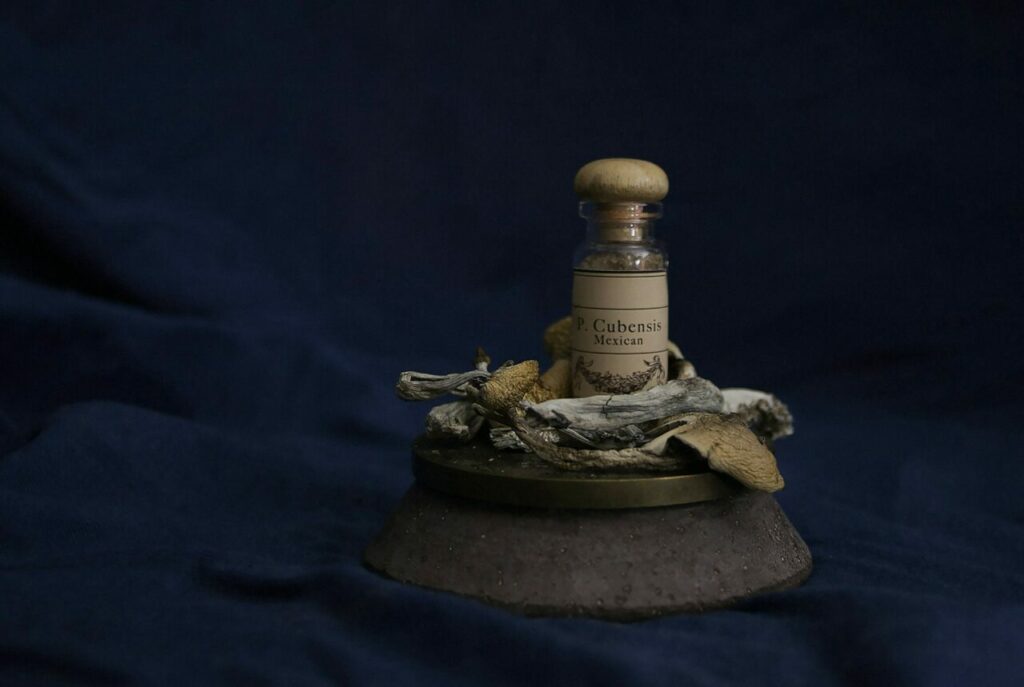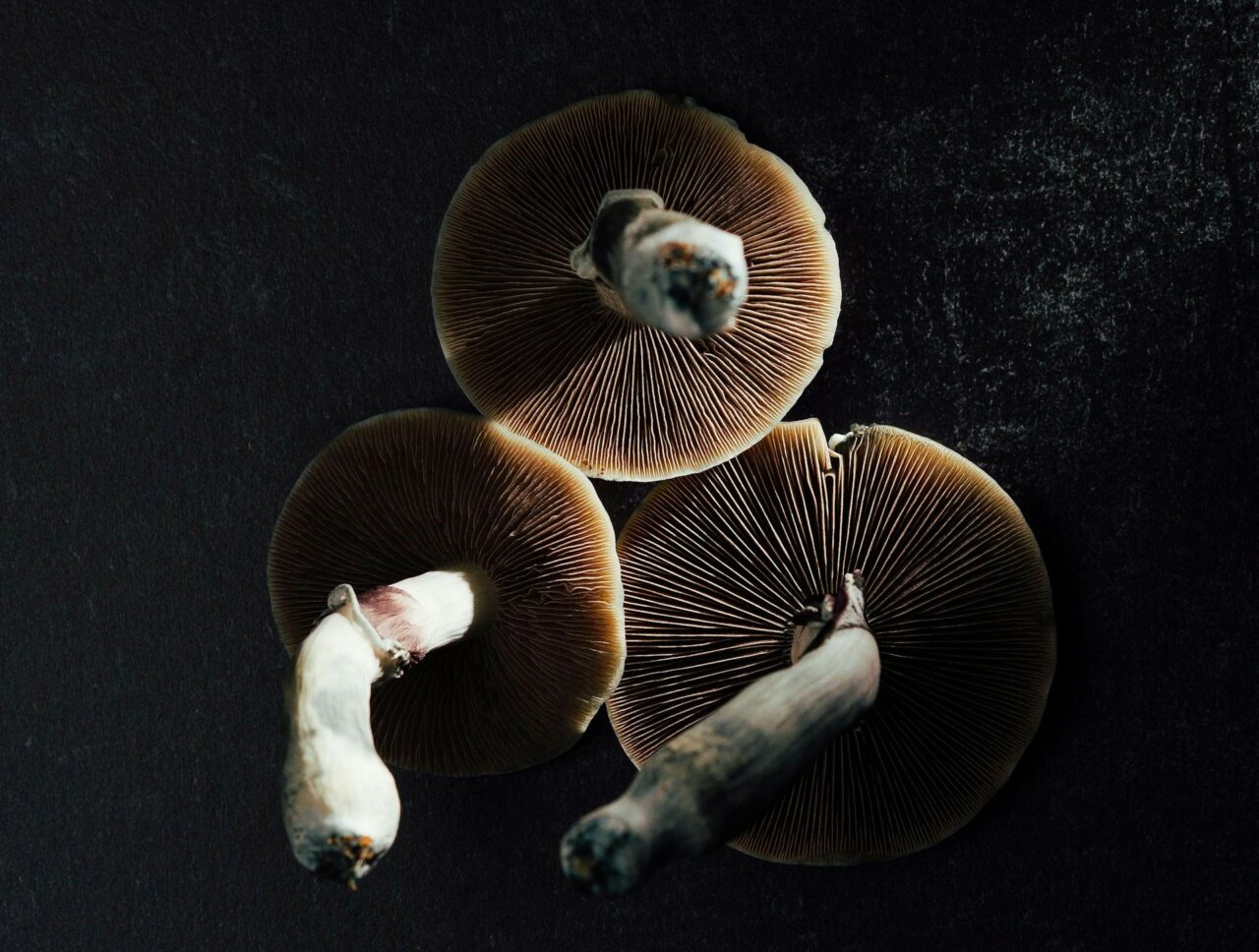With the growing interest in natural magic mushrooms in Canada, there’s a simultaneous rise in the popularity of lab-produced psilocybin products. The consistent dosage provided by these products is favored by many researchers. Yet, they may not realize that natural mushrooms can often have a higher potency than their lab-made counterparts. Experts have noted significant distinctions between the two, particularly in terms of potency levels.

Key Takeaways:
- More than 180 species of natural mushrooms, with potency influenced by species, consumption method, cultivation, and individual tolerance, offer a variety of intensity levels.
- Synthetic psilocybin, a lab-created version of the natural compound, is manufactured under controlled conditions to ensure purity and consistency, particularly for clinical research in the realm of mental health treatments.
- The combined effects of different compounds found in psychedelic mushrooms, such as psilocin and baeocystin, can create a more potent and deeper experience than a single compound alone.
Emerging Market: Various Forms of Psychedelics
Psilocybin mushrooms are gaining popularity in Canada at a rapid pace, especially for treating mental health conditions like OCD, depression, PTSD, and anxiety. Provincial governments are starting to contemplate decriminalizing their recreational use in response to this surge in interest.
In 2020, Canada allowed limited medical use of these mushrooms under specific conditions. Just a year later, terminally ill patients were authorized by the federal government to use these substances to manage their symptoms.
Such progressive steps have spurred the development of synthetic psychedelics.
The Ongoing Debate
The continuous discussion on natural versus lab-made psychedelics focuses on safety, accessibility, and cost issues.
Many believe that natural psychedelics provide a more holistic and traditional experience. Conversely, supporters of lab-produced versions emphasize their ease of standardization for medical applications, as well as guaranteed dosage control and quality assurance.
While lab-made psychoactive substances may increase accessibility, concerns about potential drug monopolization remain. Critics warn this could result in less
The elevated costs and issues with accessibility can be a burden for users.
A Comprehensive Look at Psilocybin
Psilocybe cubensis, a variety of magic mushroom, is one of the many naturally occurring psychedelic substances we have today. Popular for their mind-altering effects, magic mushrooms come in a range of strains such as Golden Teachers, Amazonian Cubensis, Blue Meanies, and more, with Psilocybe cubensis being the most well-known.
Demystifying the Psychedelic Experience
Psilocin, a compound derived from these mushrooms, converts into a different chemical once metabolized by the liver. This newly formed compound engages with the brain’s serotonin receptors, primarily the 5-HT2A receptor.
This receptor is vital for mood regulation, cognitive functions, and perception. Its interaction with the new compound modifies the typical operation of serotonin pathways, leading to changes in visual and auditory perception, alterations in thought patterns, and emotional states. This results in elevated mood, amplified creativity, self-reflection, and the commonly referred to “psychedelic” experiences.
Two Main Categories
| Natural | Found in over 180 species of fungi, with varying potency based on the mushroom species. Psilocybe cubensis is a prevalent variety. The effects can differ depending on consumption methods, cultivation practices, and individual tolerance. |
| Synthetic | Manufactured in laboratories and chemically identical to natural compounds. They are produced in controlled environments for consistency and purity. They are being increasingly researched for clinical uses, particularly in mental health treatments. |
Natural Versus Synthetic: The Fundamental Differences
Natural variants of these drugs occur in specific magic mushroom species. Indigenous communities in North and South America have utilized these mushrooms in their rituals and ceremonies, esteeming them as sacred or divine.
- Derived from plants and mushrooms
- Used in ancient rituals and medicinal practices
- The unique genetic composition of each strain contributes to its potency
On the other hand, synthetic versions are made in laboratories.
These substances mimic the natural chemical structure of a particular compound. Expertly crafted in strict, controlled settings by professionals, these drugs not only perform similarly to their natural counterparts but also have the potential to alter the overall psychedelic experience.
- Meticulously crafted by experienced pharmaceutical experts
- Latest advancements intended for medical uses
- Precisely determined potency due to a strictly regulated manufacturing process
Natural substances, due to their bioactive compounds, confer more advantages. Various types of mushrooms can contain different amounts of psilocybin and other compounds, resulting in a range of effects.
Researcher Insights
Researchers at the Hebrew University found that psychedelic mushrooms have a more potent and long-lasting effect on synaptic plasticity compared to their synthetic counterparts. They studied the drug’s influence on the brain activity of mice by observing changes in their behavior and certain brain chemicals.
The study revealed that the extract reduced head twitches and promoted the formation of new brain connections. This suggests that the mushroom extract may have more benefits than a single compound.
The researchers also introduced the idea of the “entourage effect”. They described it as the combined effect of multiple compounds in psychedelic mushrooms, which could be more potent than the effects of individual compounds. In the case of mushrooms, psilocin, baeocystin, and other tryptamines may synergistically create a profound experience.
These additional chemicals are absent in laboratory-created substances, which may result in subtle differences in effects, even if the psychedelic content is the same.
Expert Opinions on Nature’s Superiority
Research consistently shows that psilocybin, regardless of its form, offers promising results for the treatment of various psychiatric disorders. A 2024 study exploring the effects of controlled substances on patients with treatment-resistant depression found decreased symptoms after administering magic mushrooms.
When combined with other treatments, natural psychedelics may facilitate deeper emotional processing and insights during therapy sessions, thus enhancing long-term outcomes.
Researchers from the same university noted that hallucinogenic mushrooms boost synaptic plasticity. They have a distinctive metabolic profile that affects oxidative stress and energy production pathways, unlike laboratory-created psychedelics.
Implications for the Market
A growing body of research on this subject could affect Canadians’ perspectives and purchasing behavior regarding psychedelics. Health Canada’s early initiatives, such as the Special Access Program, are demonstrating potential to pave the way towards legalization and revolutionize therapeutic practices. Psilocybin-assisted therapy could soon be a leading treatment methodology.
Organic options are likely to become increasingly important in clinical trials and therapeutic scenarios. As the country progresses towards fully recognizing the capabilities of organic psychedelics, significant breakthroughs in mental health treatments appear to be on the horizon.
Steps for Safely Procuring Shrooms in Canada
- Through Section 56 Exemption: Health Canada recognizes that patients with serious medical conditions may utilize psilocybin as an alternative form of treatment. This exemption is part of the Controlled Drugs and Substances Act.
- Clinical Trials: Initial clinical trials are approved to investigate the drug’s potential for managing mental health disorders. Participants are required to meet specific criteria and undergo a doctor’s screening.
- Online Market: Psilocybin capsules or edibles can be purchased from online vendors in Canada, but it’s crucial to buy from reliable sources.
Experience the Power of Natural Substances
Nature abounds with marvels, one of which is shrooms. Rather than utilizing synthetic psychedelics, consider the naturally potent magic mushrooms from Canada. They are both powerful and therapeutic. Discover the best, naturally sourced shroom strains at Mushroom Gummies Canada.
The shrooms we make available for purchase not only adhere to the standard but exceed it by retaining their pure and authentic composition in a dried form. Place an order today, and your chosen items will be discreetly and conveniently delivered to your doorstep.
Frequently Asked Questions
What are baeocystin and norbaeocystin?
Baeocystin and norbaeocystin are both tryptamine, or indole alkaloids. They have a chemical composition similar to psilocybin. These tryptamine derivatives act as secondary alkaloids in shrooms, contributing to the overall psychedelic experience, although to a lesser extent. Baeocystin and Norbaeocystin have a similar chemical structure but differ in their psychoactive effects.
Do organic dried mushrooms constitute the content of capsules and edibles?
The effect that is experienced could vary based on the product’s origin. Products that are rich in organic compounds are often provided by online dispensaries, facilitating the full entourage effect. In contrast, synthetically produced compounds, typically in capsule form, are frequently used in clinical research and therapeutic settings.
Do natural psychedelics facilitate more profound experiences?
It’s crucial to note that expecting a profound experience from a natural psychedelic could potentially generate that precise result. This is because our expectations, which form a component of the ‘set’, can significantly influence the journey. Natural psychedelics are often linked with ceremonial traditions, and this ritualistic setting can evoke uniquely fulfilling experiences. These experiences differentiate in numerous aspects from clinic-based sessions that involve synthetic compounds.





